Odemir Martinez Bruno
Binary Distance Transform to Improve Feature Extraction
Dec 19, 2016



Abstract:To recognize textures many methods have been developed along the years. However, texture datasets may be hard to be classified due to artefacts such as a variety of scale, illumination and noise. This paper proposes the application of binary distance transform on the original dataset to add information to texture representation and consequently improve recognition. Texture images, usually in grayscale, suffers a binarization prior to distance transform and one of the resulted images are combined with original texture to improve the amount of information. Four datasets are used to evaluate our approach. For Outex dataset, for instance, the proposal outperforms all rates, improvements of an up to 10\%, compared to traditional approach where descriptors are applied on the original dataset, showing the importance of this approach.
Texture analysis using deterministic partially self-avoiding walk with thresholds
Nov 25, 2016



Abstract:In this paper, we propose a new texture analysis method using the deterministic partially self-avoiding walk performed on maps modified with thresholds. In this method, two pixels of the map are neighbors if the Euclidean distance between them is less than $\sqrt{2}$ and the weight (difference between its intensities) is less than a given threshold. The maps obtained by using different thresholds highlight several properties of the image that are extracted by the deterministic walk. To compose the feature vector, deterministic walks are performed with different thresholds and its statistics are concatenated. Thus, this approach can be considered as a multi-scale analysis. We validate our method on the Brodatz database, which is very well known public image database and widely used by texture analysis methods. Experimental results indicate that the proposed method presents a good texture discrimination, overcoming traditional texture methods.
* 8 pages, 3 figures
Fast deterministic tourist walk for texture analysis
Nov 25, 2016



Abstract:Deterministic tourist walk (DTW) has attracted increasing interest in computer vision. In the last years, different methods for analysis of dynamic and static textures were proposed. So far, all works based on the DTW for texture analysis use all image pixels as initial point of a walk. However, this requires much runtime. In this paper, we conducted a study to verify the performance of the DTW method according to the number of initial points to start a walk. The proposed method assigns a unique code to each image pixel, then, the pixels whose code is not divisible by a given $k$ value are ignored as initial points of walks. Feature vectors were extracted and a classification process was performed for different percentages of initial points. Experimental results on the Brodatz and Vistex datasets indicate that to use fewer pixels as initial points significantly improves the runtime compared to use all image pixels. In addition, the correct classification rate decreases very little.
* 7 page, 7 figure
Improved texture image classification through the use of a corrosion-inspired cellular automaton
Dec 26, 2014


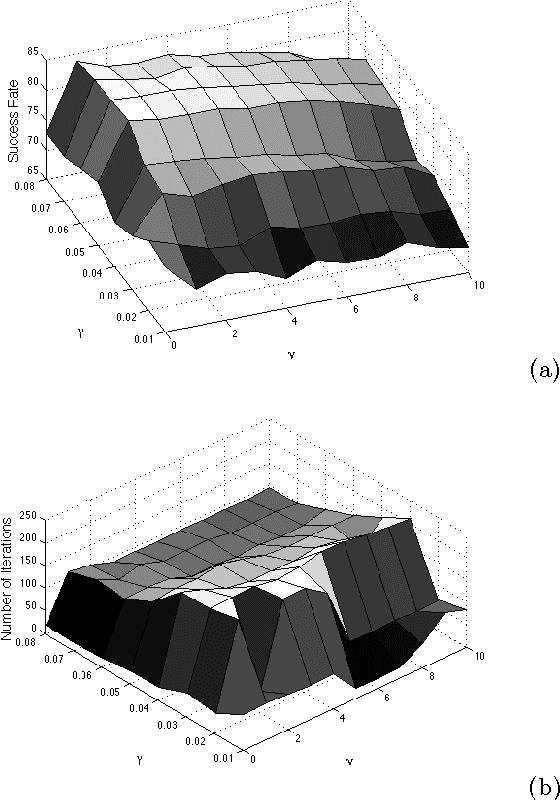
Abstract:In this paper, the problem of classifying synthetic and natural texture images is addressed. To tackle this problem, an innovative method is proposed that combines concepts from corrosion modeling and cellular automata to generate a texture descriptor. The core processes of metal (pitting) corrosion are identified and applied to texture images by incorporating the basic mechanisms of corrosion in the transition function of the cellular automaton. The surface morphology of the image is analyzed before and during the application of the transition function of the cellular automaton. In each iteration the cumulative mass of corroded product is obtained to construct each of the attributes of the texture descriptor. In a final step, this texture descriptor is used for image classification by applying Linear Discriminant Analysis. The method was tested on the well-known Brodatz and Vistex databases. In addition, in order to verify the robustness of the method, its invariance to noise and rotation were tested. To that end, different variants of the original two databases were obtained through addition of noise to and rotation of the images. The results showed that the method is effective for texture classification according to the high success rates obtained in all cases. This indicates the potential of employing methods inspired on natural phenomena in other fields.
* 13 pages, 14 figures
Enhancing fractal descriptors on images by combining boundary and interior of Minkowski dilation
Dec 26, 2014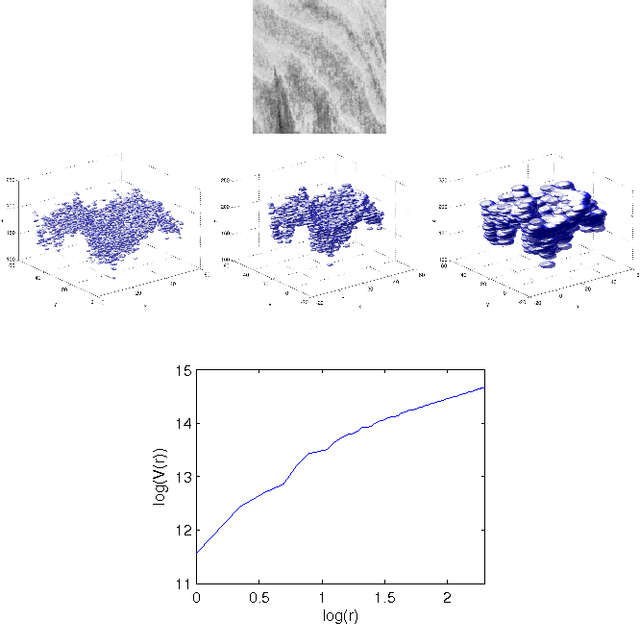

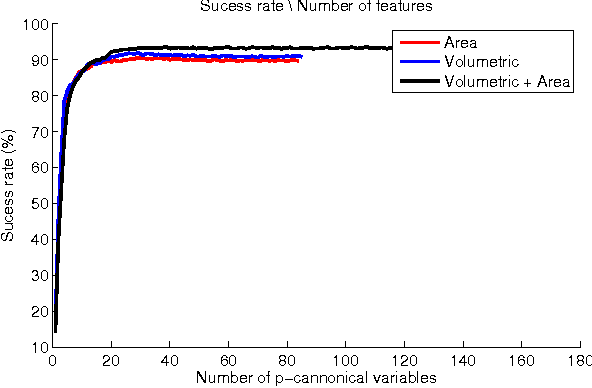

Abstract:This work proposes to obtain novel fractal descriptors from gray-level texture images by combining information from interior and boundary measures of the Minkowski dilation applied to the texture surface. At first, the image is converted into a surface where the height of each point is the gray intensity of the respective pixel in that position in the image. Thus, this surface is morphologically dilated by spheres. The radius of such spheres is ranged within an interval and the volume and the external area of the dilated structure are computed for each radius. The final descriptors are given by such measures concatenated and subject to a canonical transform to reduce the dimensionality. The proposal is an enhancement to the classical Bouligand-Minkowski fractal descriptors, where only the volume (interior) information is considered. As different structures may have the same volume, but not the same area, the proposal yields to more rich descriptors as confirmed by results on the classification of benchmark databases.
* 6 pages 3 figures
Fractal descriptors based on the probability dimension: a texture analysis and classification approach
Dec 25, 2014



Abstract:In this work, we propose a novel technique for obtaining descriptors of gray-level texture images. The descriptors are provided by applying a multiscale transform to the fractal dimension of the image estimated through the probability (Voss) method. The effectiveness of the descriptors is verified in a classification task using benchmark over texture datasets. The results obtained demonstrate the efficiency of the proposed method as a tool for the description and discrimination of texture images.
* 7 pages, 6 figures. arXiv admin note: text overlap with arXiv:1205.2821
Brachiaria species identification using imaging techniques based on fractal descriptors
Dec 25, 2014
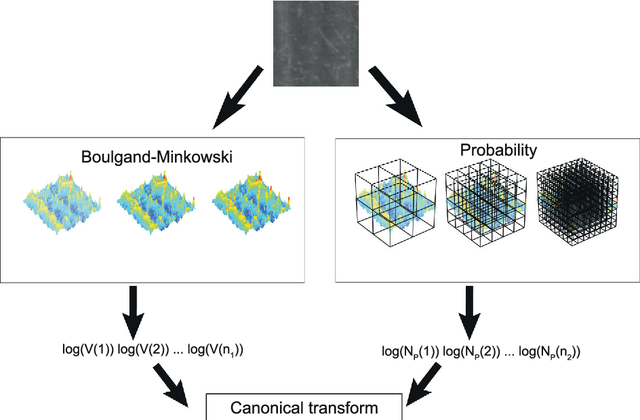

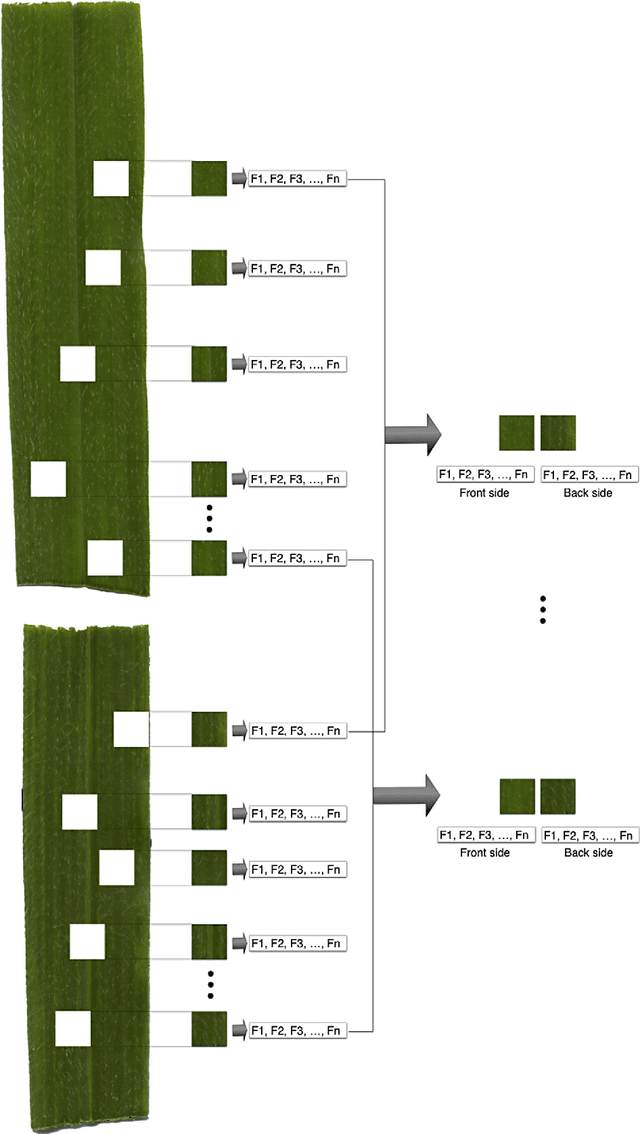
Abstract:The use of a rapid and accurate method in diagnosis and classification of species and/or cultivars of forage has practical relevance, scientific and trade in various areas of study. Thus, leaf samples of fodder plant species \textit{Brachiaria} were previously identified, collected and scanned to be treated by means of artificial vision to make the database and be used in subsequent classifications. Forage crops used were: \textit{Brachiaria decumbens} cv. IPEAN; \textit{Brachiaria ruziziensis} Germain \& Evrard; \textit{Brachiaria Brizantha} (Hochst. ex. A. Rich.) Stapf; \textit{Brachiaria arrecta} (Hack.) Stent. and \textit{Brachiaria spp}. The images were analyzed by the fractal descriptors method, where a set of measures are obtained from the values of the fractal dimension at different scales. Therefore such values are used as inputs for a state-of-the-art classifier, the Support Vector Machine, which finally discriminates the images according to the respective species.
* 7 pages, 5 figures
Satellite image classification and segmentation using non-additive entropy
Jan 10, 2014



Abstract:Here we compare the Boltzmann-Gibbs-Shannon (standard) with the Tsallis entropy on the pattern recognition and segmentation of coloured images obtained by satellites, via "Google Earth". By segmentation we mean split an image to locate regions of interest. Here, we discriminate and define an image partition classes according to a training basis. This training basis consists of three pattern classes: aquatic, urban and vegetation regions. Our numerical experiments demonstrate that the Tsallis entropy, used as a feature vector composed of distinct entropic indexes $q$ outperforms the standard entropy. There are several applications of our proposed methodology, once satellite images can be used to monitor migration form rural to urban regions, agricultural activities, oil spreading on the ocean etc.
Texture descriptor combining fractal dimension and artificial crawlers
Nov 21, 2013



Abstract:Texture is an important visual attribute used to describe images. There are many methods available for texture analysis. However, they do not capture the details richness of the image surface. In this paper, we propose a new method to describe textures using the artificial crawler model. This model assumes that each agent can interact with the environment and each other. Since this swarm system alone does not achieve a good discrimination, we developed a new method to increase the discriminatory power of artificial crawlers, together with the fractal dimension theory. Here, we estimated the fractal dimension by the Bouligand-Minkowski method due to its precision in quantifying structural properties of images. We validate our method on two texture datasets and the experimental results reveal that our method leads to highly discriminative textural features. The results indicate that our method can be used in different texture applications.
Contour polygonal approximation using shortest path in networks
Nov 18, 2013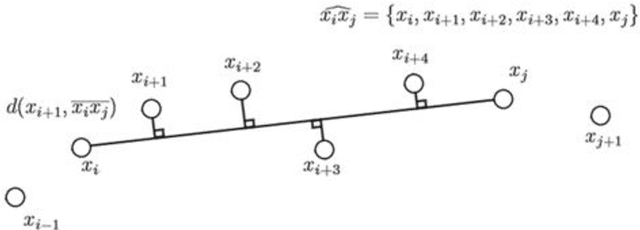
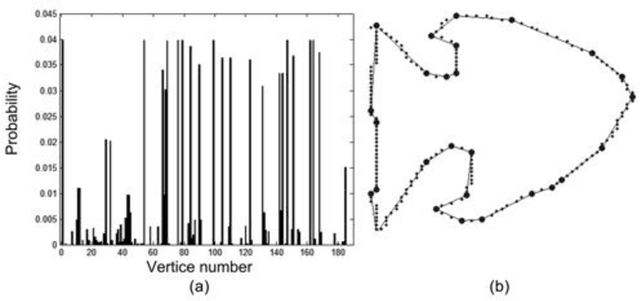


Abstract:Contour polygonal approximation is a simplified representation of a contour by line segments, so that the main characteristics of the contour remain in a small number of line segments. This paper presents a novel method for polygonal approximation based on the Complex Networks theory. We convert each point of the contour into a vertex, so that we model a regular network. Then we transform this network into a Small-World Complex Network by applying some transformations over its edges. By analyzing of network properties, especially the geodesic path, we compute the polygonal approximation. The paper presents the main characteristics of the method, as well as its functionality. We evaluate the proposed method using benchmark contours, and compare its results with other polygonal approximation methods.
 Add to Chrome
Add to Chrome Add to Firefox
Add to Firefox Add to Edge
Add to Edge